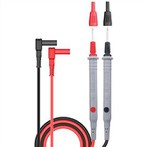Some common problems in purchasing microscopes
Question 1. How is the price of the microscope constituted?
Many microscope purchasers have asked us such a question, that is, "how much is a microscope?" I just want to get a general idea of the quotation of the microscope, and we estimate that we will only give a vague price range with a very large price difference. The key reason for such a result lies in the configuration of the microscope. In fact, buying a microscope is very similar to buying a computer—everything has to be configured according to your requirements. For example, you need several observation modes (affecting the number of objective lenses), whether you need software, whether you need CCD, etc. These requirements greatly affect the quotation of the microscope. You must know that the most important and most valuable part of the whole microscope is the objective lens. , its number will greatly affect the price of the microscope.
Question 2: Know what type of microscope is suitable for the sample you want to test before purchasing?
Microscopes can be divided according to different functions according to the observation samples: generally there are metallographic microscopes, polarizing microscopes, stereo microscopes, biological microscopes, fluorescence microscopes, etc. Different functional microscopes are used in different ways. Polarizing microscopes are mainly used in the detection of anisotropic non-metallic materials such as geological ores. Metallographic microscopes are mainly used in the observation, identification and analysis of internal structures of various opaque materials such as metals. It is suitable for factories, mines, enterprises, institutions of higher learning and scientific research departments. Equipped with a camera device, the instrument can capture metallographic atlases, measure and analyze the atlases, and edit, output, store, and manage images. Stereo microscopes are suitable for micron-level actual effect analysis, fracture detection, inspection of electronic industry production lines, verification of printed circuit boards, verification of soldering defects (printing misalignment, edge collapse, etc.) in printed circuit assemblies, verification of single-board PCs, And all areas where there is careful observation of the sample surface, equipped with measurement software to measure various data. Biological microscopes are mainly suitable for medical diagnosis, testing, teaching, and research in the medical and health fields, schools, and scientific research units. Therefore, before purchasing, you should figure out what the sample you want to observe is, so that the merchant can recommend you a suitable microscope.






